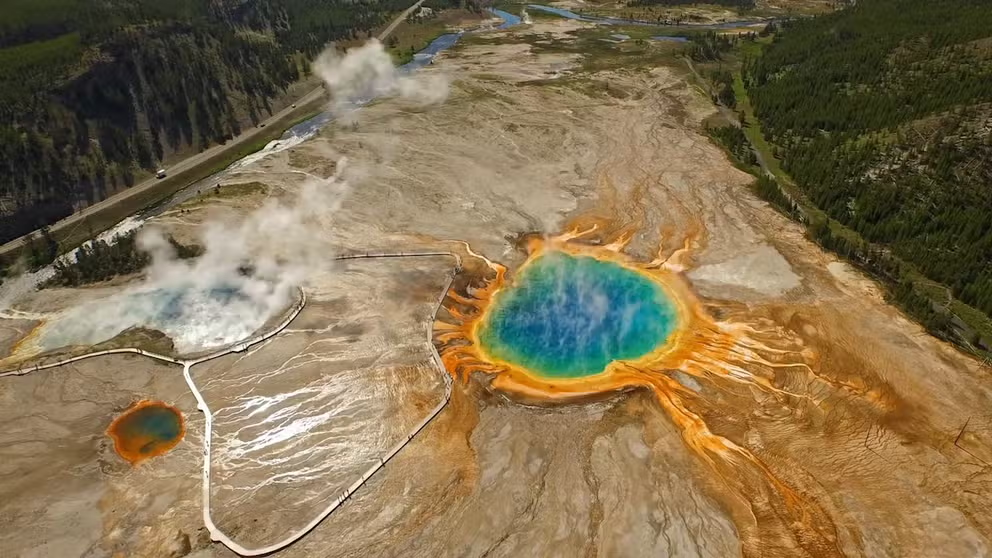How weather and politics decided the date of the first Earth Day
The history of Earth Day involves a Wisconsin senator, the political power of youth activists and the rise of the modern environmental movement.
Must know facts about why we celebrate Earth Day
April 22 is Earth Day, but why?
For more than 50 years, Earth Day has helped bring attention to the health and well-being of Mother Earth.
This rise of the modern environmental movement was largely made possible by key players in politics, along with a young demographic that had recently made their political power known.
With beginnings on American college campuses, the holiday and the environmental policies it championed have spread throughout the globe.
Here are some facts about the history of Earth Day:
When the first Earth Day was celebrated
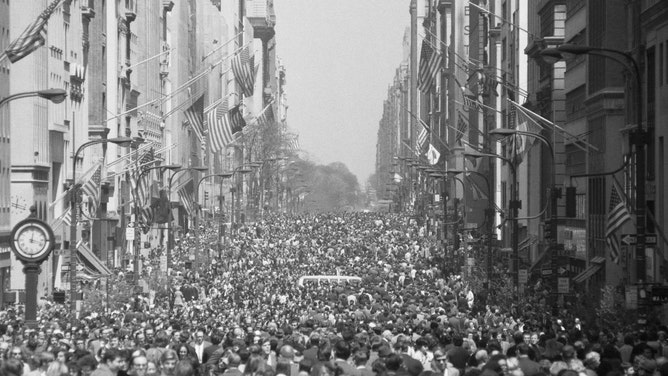
Crowds pack 5th Avenue in New York City during the city's first Earth Day celebration 1970.
(Bettmann / Getty Images)
The first Earth Day was hosted on April 22, 1970. Celebrations were held across the U.S., with the two largest gatherings located in New York City and Washington, D.C.
PLANTING TREES IN THE BRONX FOR THE BETTERMENT OF THE PLANET
According to the EPA, more than 20 million people participated in the first Earth Day events around the country. Today, nearly 1 billion people celebrate Earth Day worldwide.
Who founded Earth Day

U.S. Senator and founder of Earth Day Gaylor Nelson stands in Rock Creek Park in Washington, D.C.
(Janet Fries / Getty Images)
The first Earth Day was spearheaded by Senator Gaylord Nelson of Wisconsin.
A former governor of the Badger State, Nelson had a long history of promoting conservation efforts in his home state and across the country. The senator had a number of accomplishments, such as banning DDT and preserving the Appalachian Trail.
Nelson and his Senate staff enlisted the help of law student Denis Hayes to serve as the national coordinator of Earth Day efforts.
How young people powered the environmental movement
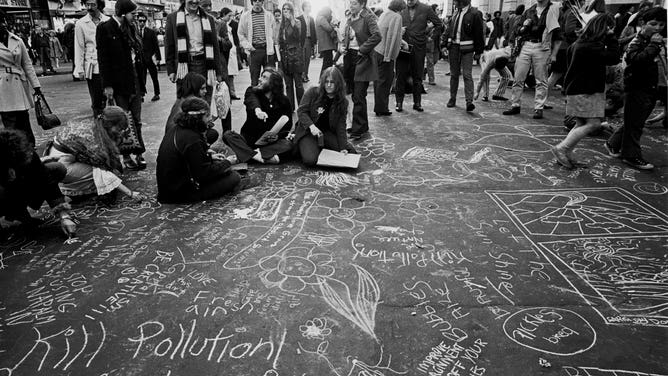
Messages are scrawled onto the streets of New York City on Earth Day 1970.
(Santi Visalli / Getty Images)
The first Earth Day was made possible by young people.
According to Encyclopedia Britannica, Nelson and Hayes recognized the energy of student-led anti-war activism in the 1960s, and they wanted to infuse that energy with what was a relatively new environmental consciousness in the general public.
HOW ‘CAPTAIN PLANET’ INSPIRED AN ENVIRONMENTAL MOVEMENT
Nelson and Hayes sought to harness this environment-focused energy of young people to help push forth environmental priorities in national politics.
Why April 22 was chosen for Earth Day
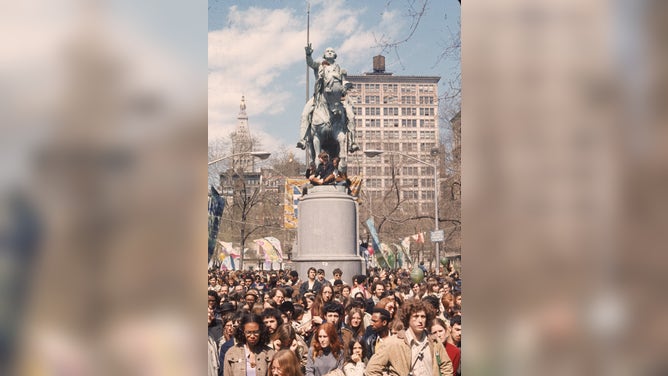
Crowds gather by a George Washington statue in Union Square for Earth Day celebrations, New York City, April 22, 1970.
(Hulton Archive / Getty Images)
The focus on making Earth Day a youth-led grassroots movement helped sway the decision on when to host the first Earth Day.
According to the U.S. Senate, Nelson’s team believed the ideal time for college students would be the week of April 19 to 25, and they determined that students were more likely to be on campus on Wednesdays.
Combined with the greater chances of favorable weather in the spring, Nelson’s team pinpointed Wednesday, April 22 to be the date for Earth Day in the U.S.
How Earth Day helped move environmental policy forward
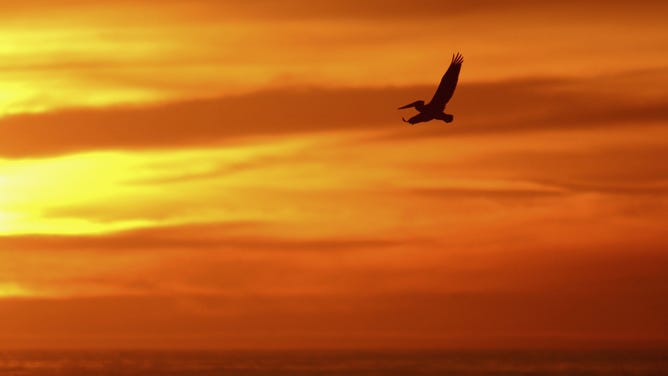
Silhouette of a California brown pelican, which has been on the Endangered Species List since the 1970s.
(David McNew / Getty Images)
The first Earth Day celebration in 1970 played a significant role in garnering support for environmental legislation, according to Encyclopedia Britannica.
Some examples of legislation included revisions in the Clean Air Act in 1970 and the passage of the Endangered Species Act in 1973.
WESTERN MONARCH BUTTERFLY COUNT YIELDS HIGHEST TOTAL IN 5 YEARS
In the months following the first Earth Day, the increased push for environmental legislation led to the founding of the EPA. It was then officially established in December 1970.
A long history of conservation
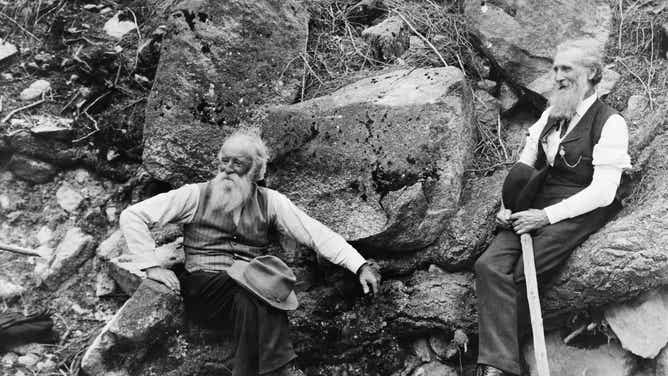
Naturalists John Burroughs and John Muir seated on a group of large rocks. The two helped pioneer the early conservation movement in the U.S. in the late 19th and early 20th centuries.
(Bettmann / Getty Images)
The EPA and Earth Day initiatives were part of a long history of conversation efforts in the U.S.
In the collection "The Evolution of the Conservation Movement", the Library of Congress documents the American conservation movement starting over 120 years prior to the first Earth Day.
Some of the early efforts to protect the environment included the designation of national parks. In fact, National Park Week as hosted by the National Park Service usually falls around Earth Day.
